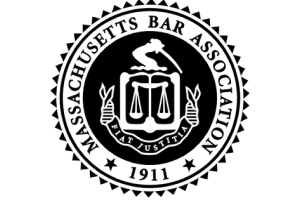Crime scene investigations
Hands on Experience.
In particularly serious incidents including homicides, police will conduct an investigation of the scene of the crime in order to present evidence of what happened. If you have ever watched a crime procedural, you probably have an idea in your head about what these investigations look like.
Unfortunately, what you see on TV often does not resemble the reality of how police go about this process. Rather, extreme disorganization, contamination of evidence, assumptions and a rush to judgment are the hallmarks of most crime scene investigations.
[E]xtreme disorganization, contamination of evidence, assumptions and a rush to judgment are the hallmarks of most crime scene investigations.
– Ryan Sullivan
Yet, few lawyers have the experience and skill necessary to pull back the neat picture the government will attempt to paint. As former prosecutors, Attorneys Erkan and Sullivan have been to trainings on homicide response protocols, crime scene investigation, criminalistics, and ballistics.
More importantly, during our time with the prosecutor’s office, we took a decidedly hands-on approach to our jobs. Rather than simply waiting to see what investigators put together, we worked hand in hand with them to direct the investigation and ensure that things were done the right way. We have been with detectives on the field, examining and controlling the scene. We have rushed up the stairs of target premises with officers as they breached doors into homes to execute search warrants. We have observed autopsies taking place, and met with coroners to discuss their findings.
We have been with detectives on the field, examining and controlling the scene. We have rushed up the stairs of target premises with officers as they breached doors into homes to execute search warrants. We have observed autopsies taking place, and met with coroners to discuss their findings.
– Murat Erkan
Only through this hands on experience can an attorney truly understand the crime scene process, and how detectives invariably foul it up. Most lawyers lack any comparable experience and, as a result, lack the knowledge base to call these investigations into question.
Some of the most frequent mistakes police make in conducting a proper crime scene investigation.
First response spoliation.
Rather than trained detectives, rank and file patrol officers are the first to the scene, and they are the chief architects of common blunders.
The cardinal rule of crime scene investigation is to protect the integrity of the scenes. Unfortunately, patrol officers have little training in this regard.
When you think about crime scenes based on what you saw on tv, you are probably imagining police barricades and yellow tape clearly marking off the scene. Unfortunately, in a surprising number of cases, we will learn that police have skipped or delayed this crucial first step. People may be standing about, or walking away from the scene. Many officers will fail to speak to or even identify these individuals, some of whom may have been eye-witnesses to the event. Crucial eye-witness accounts will forever be lost. Similarly, by failing to control access to the scene, police may allow valuable evidence to be contaminated or even removed.
Worse, patrol officers may themselves irreparably damage the scene. They are notorious for moving evidence from its original location, often without even wearing gloves. By so doing, they have changed the true story that these objects should tell. Equally important is that officers handling and disturbing the evidence will fail to account for their actions, destroying the chain of custody which is otherwise critical in establishing the authenticity of key evidence. This is called crime scene contamination, and it is disastrous to the truth-finding process.
When officers finally do tape off the scene, they will often fail to correctly determine its boundaries. By setting arbitrary lines, police often miss evidence vital to the investigation.
Preservation of the Scene.
Contamination of the crime scene is a problem that persists even when trained detectives have taken over.
A competent investigator will make sure that a detailed log is maintained of all comings and goings and occurrences at the scene. Paramedics and other first responders should be identified for later questioning and testimony. Each person’s arrival and departure times should be noted. Their role at the scene, what they discovered should be documented, as well as the custody and safekeeping of all relevant evidence. In our experience, these safeguards are rarely put into place. We have been to many trials, only to find evidence lumped together in a single bag, with no clear indication as to who found it, where it was found, and what was actually done with it. Without intimate knowledge of scene preservation protocols, most attorneys lose key opportunities to identify mistakes in scene processing which could otherwise have a dramatic effect on the outcome of a case.
Tunnel vision.
If tunnel vision were classified as a disease, you can bet that a police officer was “patient zero.”
Yet, this phenomena of rushing to judgment without a full command of the facts is a characteristic common to almost every criminal case. Officers will make a preconceived conclusion, then look for evidence that supports that conclusion, rather than evidence of what actually happened. They will form their impression sometimes based on what was stated in the initial call, or what first catches their eye at the scene. This does not mean the officer lacks good intentions; rather, it is an example of “confirmation bias,” or the tendency we all have to look at evidence in a way that supports our first impression. The problem is, police should suppress this tendency, but often cannot.
If tunnel vision were classified as a disease, you can bet that a police officer was “patient zero.”
– Murat Erkan
Whatever the reason for it, tunnel vision is devastating to the truth-finding process. This is because the initial conclusion is necessarily formed in a factual vacuum, with little, if any, factual support. The problem then becomes that police will overlook or ignore evidence which does not fit their theory of the case. Police will not search for, document or preserve (via photograph or otherwise) relevant evidence. They will discount the importance of witness statements. Their lack of bad intentions is little consolation to the person who is wrongfully accused as a result.
Failure to take pictures, record statements, and canvass for witnesses and surveillance cameras.
Many officers operate under the assumption that they are the final word on what happened. Sadly, those assumptions are fueled by jurors and judges who think that police are the good guys and should be trusted without question. But does a person become truthful because they wear a gun and a badge? In my view they do not. Worse, we have come to believe that the uniform and what it represents fosters an environment which encourages dishonesty: where an officer knows it is his word against yours, what real consequence will he face for his dishonesty?
[T]he uniform and what it represents fosters an environment which encourages dishonesty: where an officer knows it is his word against yours, what real consequence will he face for his dishonesty?
– Ryan Sullivan
In a shocking number of cases, police make no attempts whatsoever to document evidence in its undisturbed position. Encouraged by weak lawyers that simply take their word for it, officers will skip this crucial step without challenge. Unlike most lawyers, we will not let them get away with shortcuts at the expense of the truth.
In the modern era, there is simply no excuse for failing to take pictures. Digital cameras, with vast storage capacity, are cheap and widely available. But even if an officer happens to work for the cheapest police department, that officer, like everyone else in the world, has his cell phone with him at all times. Failure to snap pictures, and thereby preserve the scene, is unjustifiable.
Similarly, in a disturbing number of cases, police officers will fail to take available means to preserve a witness’ complete statement. They will conduct their interviews, then “summarize” those interviews in report sometimes written hours or days after the fact. As you can imagine, this practice carries tremendous risk of distorting the truth. Again, why would they not record these interviews on a digital camera or a cell phone? The reason is because, most lawyers let them get away with it. We will not. We will bring to light every short cut the police take; denying them the credibility they assumed would carry the day in the eyes of the jury.
A related, but also unforgivable practice is to fail to do the legwork necessary to uncover probative evidence. The fact of the matter is, knocking on doors in the neighborhood and taking statements is time-consuming and labor intensive. But it is also necessary. Only through reaching out and making contact in the aftermath of a violent crime can police identify the people who may have seen what happened or know something about it. Police may knock on ten doors and get nothing. The problem is, it may very well be the person behind the eleventh door who has information which can fundamentally alter the course of an investigation.
The same goes for surveillance systems. Today, more and more homes are equipped with surveillance or doorbell cameras. These cameras can contain a trove of evidence relevant to the fact-finding process. Yet, police will often not pay attention to this source of evidence, choosing to stick to what information comes to them, rather than actively seeking anything out. Sadly, this often results in videos getting overwritten by the time lawyers get involved. This is one of the many reasons that, in violent crime cases, it is important to hire a lawyer right away to make sure that a thorough investigation is put into motion, which investigation will include identifying and securing relevant footage and witnesses.
Assumptions that the “victim” is the victim.
This is an off-shoot of the tunnel vision problem discussed above. It flows from the thought that the person who appears to have gotten the worst of it was the good guy. Like most assumptions, this theory rarely passes scrutiny.
A careful investigation necessarily involves objective exploration into the victim’s background. Without fully understanding the person’s lifestyle, social circle, habits, romantic and sexual relationships, criminal history, addictions, and business dealings, police have turned a blind eye to the most important questions: What prompted the incident? What were the victim’s actions leading up to the event? Did a crime occur, or was the violence related to a lawful exercise of self-defense? If a crime did occur, who may have had the motive to commit it?
Without understanding the victim in detail, police will necessarily miss opportunities to understand the true circumstances of the incident. Evidence will be overlooked or lost because police did not understand why it was important.
If a botched police investigation led to your arrest or that of a loved one, reach out to us. We can help.





